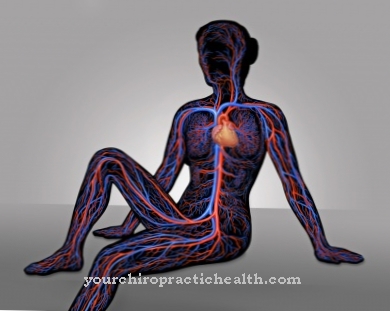The procedural memory forms long-term memory together with declarative memory. The information stored in procedural memory is not accessible to the conscious mind and is referred to as action information, so that with procedural memory sometimes also from Behavioral memory the speech is. Procedural memory is often damaged in people with degenerative diseases.
What is procedural memory?

Long-term memory in humans consists of two different parts of the memory. One is declarative memory. The content stored therein is facts about the world and one's own life that can be reproduced consciously. Procedural knowledge differs from declarative knowledge in that it eludes consciousness. For this reason, what was stored in procedural memory cannot be consciously reproduced.
Nevertheless, the contents of the procedural memory are also knowledge contents in the broadest sense. The procedural memory is also called behavioral memory and thus includes the tacit knowledge that a person has acquired for automated action processes. In this context, for example, the sequences of movements when dancing, running, cycling or driving a car are anchored in procedural memory, although the content cannot be verbalized.
All human skills are accordingly stored in this type of long-term memory. In this context, the term skills primarily refers to practically learned and complex movements, the sequence of which was practiced until it could be called up without conscious thinking about it.
Function & task
While the declarative long-term memory contains theoretical information, only practical information is stored in the procedural part of the long-term memory. In the context of procedural memory, implicit learning is often used. This is what 'learning in the situation' is called. A person learns the structure of a complex stimulus environment without necessarily intending to do so. The knowledge learned in the situation is sometimes difficult to verbalize and often finds its way into memory as an unconscious learning process.
Procedural learning occurs primarily in the cerebellum, subcortical motor centers, and basal ganglia. This distinguishes the learning process from the declarative learning of all facts that are stored with the participation of the entire neocortex.
The procedural knowledge is not conscious knowledge. Nonetheless, it is the most useful type of knowledge as it relates to unconscious processing and action routines. Running is a form of procedural knowledge that humans learn in their early childhood. The type of learning in this context corresponds to "learning by doing". From a certain age or a certain repetition rate of the running movement, the toddler no longer has to concentrate on the sequence of movements and no longer have to worry about it.
An adult will not be able to say at all what individual movements running is made up of. He is hardly aware of himself, but automatically retrieves the stored sequence of movements from his procedural memory. As soon as you no longer have to consciously think about movement sequences, they are permanently stored.
Memory contents of long-term memory are based on a special interconnection pattern of individual synapses. These interconnections are built on the basis of neural plasticity, but can also be dismantled again if they are not called up often enough. While repetitive motor activities such as cycling are retained well even if the respective person has not practiced them for a long time, synaptic interconnections for more complex movements are more easily released. This concerns, for example, rehearsed choreographies for certain dance rhythms.
In addition to motor skills and behaviors, procedural memory also includes cognitive skills and algorithms for automatic and unconscious use.
You can find your medication here
➔ Medicines against memory disorders and forgetfulnessIllnesses & ailments
Memory disorders can be of various types. The most well-known memory disorders are various types of amnesia, as they occur after damage to the declarative memory.Procedural memory disorders are to be distinguished from this. In the case of severe deficits in declarative memory, the functions and contents of procedural memory are retained in most cases, since declarative and procedural memory are located in different sections of the brain. For this reason, procedural memory disorders occur almost exclusively after damage to the basal ganglia, the cerebellum or the supplementary motor regions.
The most common cause of this type of lesion is not trauma, as it is relevant for declarative memory disorders, but degenerative diseases. Malfunctions and impairments of procedural memory are sometimes most frequently observed in patients with Parkinson's disease. Diseases such as Huntington's disease can also be the cause of procedurally impaired memory performance.
A procedural memory disorder with the loss of learned automatisms after lesions in the basal ganglia, such as those caused by inflammatory processes, hypoxia, bleeding or trauma, is less common. In individual cases, procedural memory disorder has also been linked to depression.
The suspicion of a disturbance in the procedural memory exists above all for people who lose learned skills such as the ability to write or play a certain musical instrument. Under certain circumstances, the impairment of procedural memory is reversible, for example if the affected person learns the old skills again as part of rehabilitation and in this way trains their procedural memory. In the case of degenerative diseases, the process can only be delayed by rehabilitation, but not brought to a standstill.
























.jpg)



